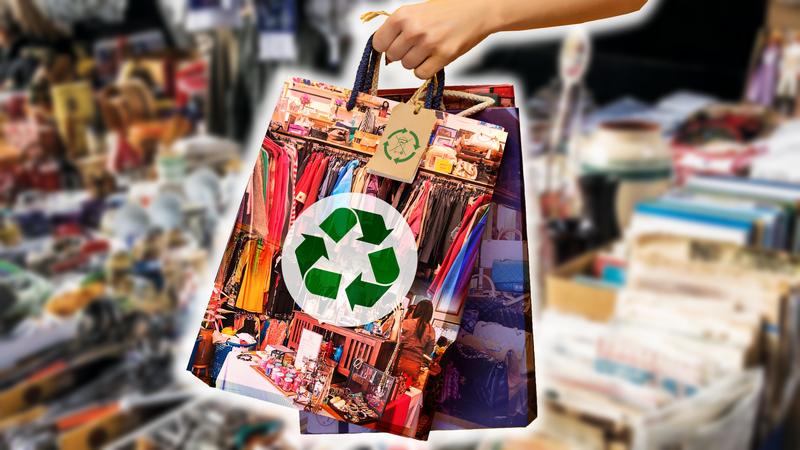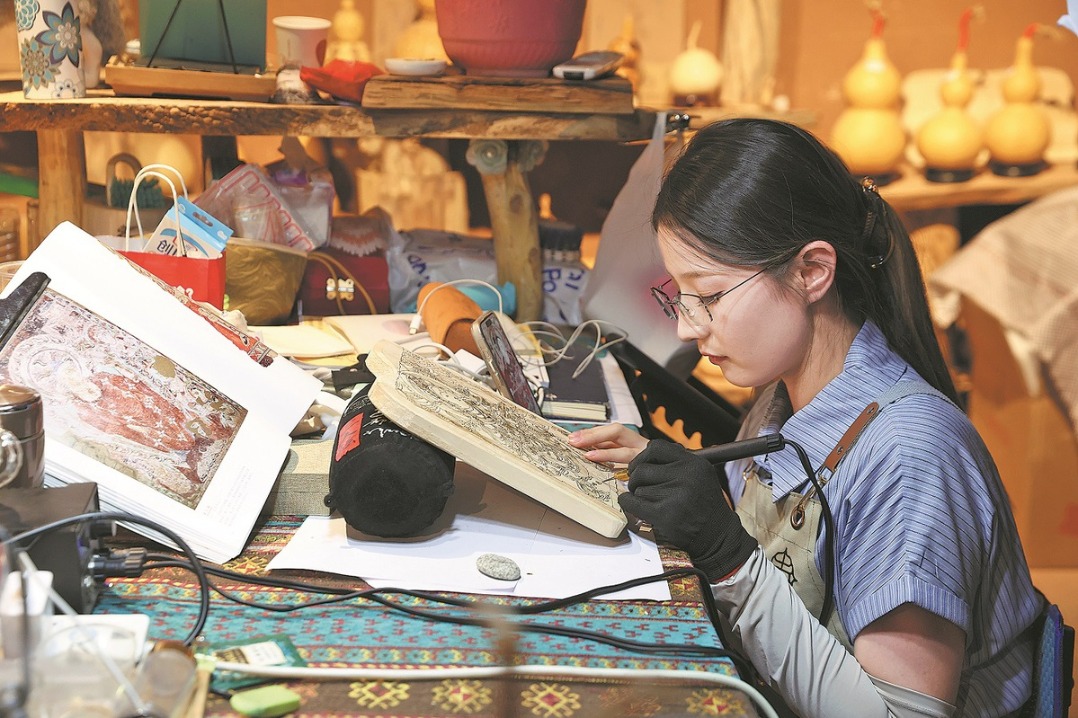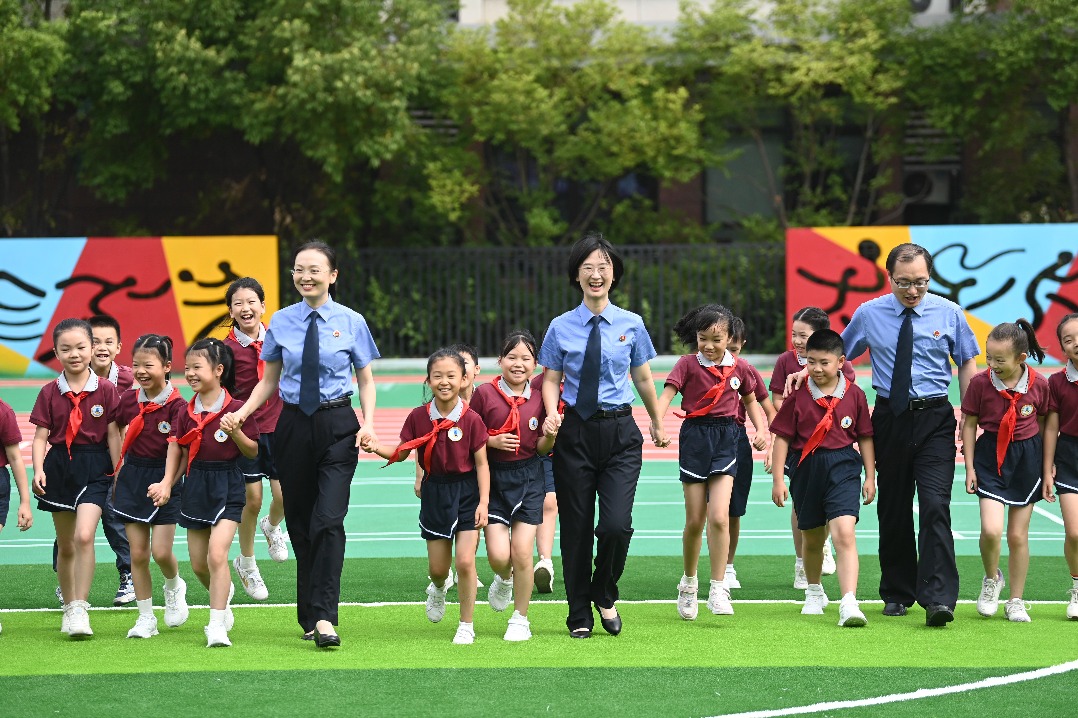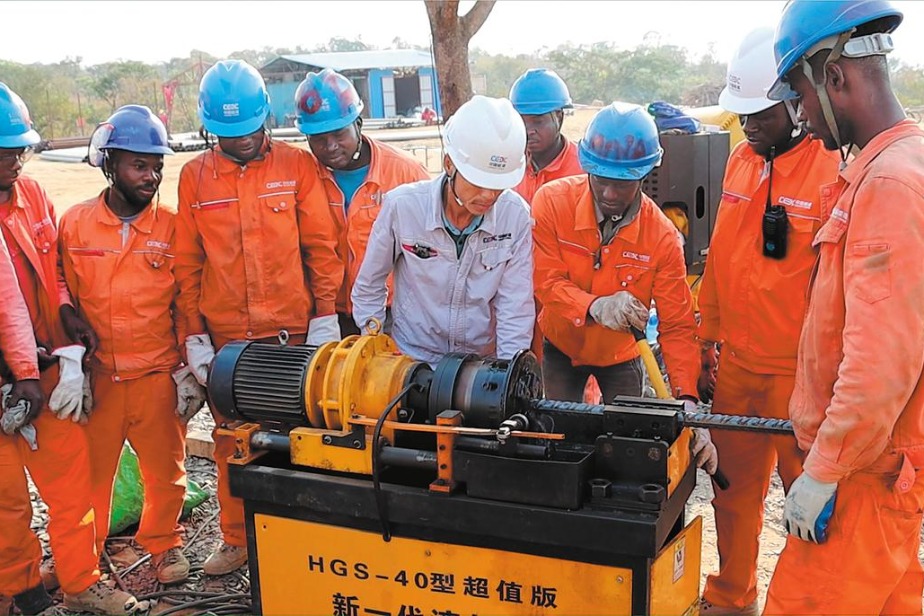Embracing a sustainable world

Hong Kong's younger residents have become more aware of wasteful consumption as a boom in the global secondhand-goods market raises hopes that the world's sustainable development goals can be met. Wang Yuke reports from Hong Kong.

COVID-19 has promoted even the swanky-fashion-conscious crowd to change, raising their alertness about green consumerism and environmental sustainability.
The glow of some of their most ostentatious possessions - in-vogue leather handbags, crystal-embellished silk dresses and exquisite vintage watches - suddenly seems to have dimmed.
Viewing the future with a sense of financial insecurity, trepidation and uncertainty, people are forced to reassess what's truly essential to them in life. They're stepping back to the basics and appreciating the state of being simple. We may ponder: Has our wasteful and unethical consumption exhausted the environment and gotten us into trouble? Shouldn't we watch how much, how often and what we're putting in our shopping bags and practice sustainable shopping to save our resource-depleting planet?
It's estimated that consumers worldwide now buy 60 percent more clothes compared with 15 years ago and keep them for just a short period of time. More than 90 million metric tons of textile waste are created globally each year, with only 12 percent of the clothing material recycled.
In Hong Kong, the situation is dire, with just 0.4 percent of the discarded clothing recycled, according to Nora Tam Fung-yee, chair professor of environmental science and conservation at the Hong Kong Metropolitan University.
The amount of textile waste collected annually is staggering. In 2014, for instance, the city racked up 110,000 tons of discarded textile waste - equivalent to "1,400 T-shirts destined for the landfills every minute", she said.
"What's more disturbing is that about 40 percent of the population throw away their clothing after wearing it just once, and one-fifth of the garments discarded every year have been hardly worn or never worn at all," Tam said.
Alan Della Noce, fashion creative director and professor of design at Politecnico di Milano - a leading technical university based in Milan, Italy - said: "As people embrace capitalism, they always want more and newer clothing, more of everything. But before fast fashion came on, high prices had restricted their greed. Cheaper fashion brands in the past few years have created a new business model for the industry, with collections being constantly updated at low prices."
"Such an abundance of cheap garments created the illusion among consumers that these products could be used only once. The possibility of constantly updating their wardrobes at very low cost has led to an extraordinary increase in consumption," he said.
People's obsession with fashion means depleting natural resources, jeopardizing the environment, and eroding animals' habitats.
Each piece of clothing normally is 50 to 100 percent cotton. Producing 1 kilogram of cotton requires 3 kg of chemicals, consuming 7,000 to 29,000 liters of water, more than any other type of crops needs. "Put it this way - producing a T-shirt typically would require 2,700 liters of water, which is enough to sustain one person for 20 days in Hong Kong," Tam said.
Moreover, chemical fertilizers and pesticides are profusely used in cotton cultivation, destroying arable land, she said. People's voracious demand for fashion is met at the cost of deforestation. Polyester used in the textile industry is responsible for 30 to 35 percent of micro-plastic pollution in waters, Tam said.
It takes up to 200 years for discarded textile materials to decompose in landfills and the process generates a huge amount of methane - a greenhouse gas that gets a lot of blame for global warming. It's estimated that the world's textile trade produces some 1.2 billion tons of carbon dioxide per year.
The United Nations warned in a report in 2019 that wasteful consumption is threatening to derail the world's 2030 sustainable development goals unless there's a "fundamental and urgent change in the relationship between people and nature".
Boom of resale market
The heartening news is that such a change is happening, driven by the boom in second-hand products. According to a report by thredUP - the US-based and world's largest fashion resale platform - the international resale market is growing at a rate 11 times faster than traditional retail and should be worth $84 billion by 2030, doubling the size of the fast-fashion business.
The world's luxury secondhand resale market in particular has gained traction in recent years, growing four times faster than the primary luxury market and is projected to double in value over the next five years, according to the 2019 True-Luxury Global Consumer Insight report jointly released by Boston Consulting Group and Italian luxury goods and jewelry chain Altagamma.
At one end of a non-descript street in Tsim Sha Tsui - one of Hong Kong's most vibrant shopping districts - is a second-hand consignment store that has been in business for 11 years. It started as an online platform in 2007, supplying pre-owned designer clothing, before turning into a brick-and-mortar store in 2010 specializing in the resale of luxury handbags.
Proprietor May Lung said her business aims to reduce the environmental impact from fast consumption. "Making the best of every piece of clothing" is the ethos she wants to convey to her customers. "Since fast fashion brands, like H&M and Zara, caught on, our secondhand designer garments have fallen out of favor with local consumers. So, in 2010, we decided to shift our focus to only pre-owned luxury handbags. We also have firsthand products available," Lung said. The shop has three tailoring specialists responsible for repairing flawed used bags, giving them a face-lift.
Lung said many shoppers of pre-owned handbags have been providing pre-owned products themselves. "When I told my customers shopping for handbags that we also recycle pre-owned goods and resell them, they kind of regret having discarded their old handbags, saying, 'If I had known you earlier, I wouldn't have thrown them away.' Many customers have the environmental sense and the intention to maximize the goods' life cycle. They just don't know what to do."
The secondhand-goods market is conducive to sustainable consumption since it extends the products' life cycle and fewer resources are needed to reproduce them, Della Noce said.
Who are those leading the charge in the secondhand market? A closer examination reveals they are millennials (those born from 1981 to 1996) and Generation Z (those born from 1997 onward) .
A report on 2020 Healthy & Sustainable Living survey published by GlobeScan - a Canada-based public opinion research consultancy - showed that about 67 percent and 62 percent of Generation Z and millennial consumers, respectively, felt guilty about their negative impact on the environment, compared with 53 percent and 40 percent among Generation X (those born from 1965 to 1980) and baby boomers (those born from 1946 to 1964) respectively. Forty-four percent and 39 percent of Generation Z and millennials respectively admitted they were ashamed of living a lifestyle that's not environmentally friendly, compared with 28 percent for Generation X consumers and 15 percent for baby boomers.
Lung said most of her customers are between 20 and 40, accounting for 80 to 85 percent of her clientele. But there's a nuance in motivating secondhand purchases between customers in their 20s and those in their 30s. "The younger group tends to buy more recent collections and brand new ones, suggesting they care more about affordable fashion than sustainability, whereas millennial customers are more environmentally driven, clinging to secondhand products. Once they break the psychological barriers to buying used items, it becomes a habit," Lung said.
Carousell - one of Southeast Asia's most popular secondhand marketplaces - said its research has shown that 93 percent of Hong Kong's millennials are purchasing secondhand products through apps because they feel secondhand products are more sustainable.
Millennials and Generation Z, who are in the vanguard of luxury-goods resale, have played an indispensable role in incentivizing the secondhand market. Unlike the older generations who go for luxury goods to show off their wealth and status, millennials and those of Generation Z prize experiences more than ownership, said John Zhang Zhong, professor of marketing at the Wharton School of the University of Pennsylvania. They live an easy and a fast-paced lifestyle, hopping from one website to another. "It's their fast-moving and short attention span that sustains their interest in the secondhand market and enhances their enjoyment in trading used luxury goods," Zhang said.
Change of consumers
"In the past, when we asked older consumers if they cared about sustainability issues and saving the Earth, they would just say 'yes' because it's hard to oppose the statement. But what makes the younger cohort different is that they're actually channeling their environmental values into their shopping patterns," said University of Pennsylvania Professor Barbara Kahn who has done extensive research on consumer choices.
Young consumers are in the driver's seat for fashion, and their consumption habits provide the impetus for a wide participation by retailers and luxury goods manufacturers in the secondhand market, Zhang said.
Khan said that "used fashion", labeled as shabby, poor and dirty, has been frowned upon by older consumers, but this is no longer an issue with young and eco-conscious customers, who see "secondhand" as the antithesis of throwaways and fast fashion.
Today's buyers are not necessarily attracted by low prices as prices of vintage pieces are sometimes higher than those of new items, Della Noce said. "What they're looking for is the patina of time, the idea of a level of craftsmanship that cannot be replicated now and so is unique and priceless."
Generation Z's affinity for the secondhand market is also reflected in the "drop culture", Della Noce added. "They constantly buy from street wear cult brand drops, but they need to resell items to afford new ones. These transactions are connected with collecting limited edition pieces, and often the reseller gain more money than what they spend initially. This makes the lifecycle of the products longer with no harm to the environment."
Hong Kong consumers may have dipped their toes into the sustainability-driven secondhand purchasing experience, but are not perfectly ready to plunge into it.
The city's Council for Sustainable Development submitted a report on public engagement in promoting sustainable consumption in 2017. Based on the feedback, council Chairman Arthur Li Kwok-cheung said: "Hong Kong has yet to develop a solid appreciation of the importance of sustainable consumption of biological resources, as well as ways and means to practice this."
Tam said that to Hong Kong consumers, convenience is everything, and online shopping offers them immediate gratification, allowing frequent updates of one's wardrobe, without costing much, which contradicts the idea of sustainable consumption.
Hong Kong people still like novelty and newness, said Robert Meeder, a professor of fashion luxury management at the Savannah College of Art and Design Hong Kong.
Hong Kong and other Asian economies are seen as "gold mines" for secondhand products by European countries, he said. "Buyers from Europe buy used and pre-loved luxury items from Asia, reselling them in their countries, where secondhand markets are widely embraced," Meeder said.
Amid the pandemic, Hong Kong has turned eerily sterile and listless as high-end fashion stores withdrew from the city, one after another. French luxury fashion house Louis Vuitton shut down its flagship store at Times Square in Causeway Bay, while Italian fashion brand Valentino closed its largest flagship store at Harbour City in Tsim Sha Tsui. Swiss luxury watchmaker Longines closed its outlets at multiple locations in the city, as have the Hong Kong-based Chow Tai Fook Jewelry Group and the SaSa cosmetics chain.
Has COVID-19, which has upended the fashion industry's entire supply chain and tamed people's hunger for fashion, offered a good opportunity for Hong Kong to steer its society from being extravagant to thrifty? Meeder's answer is "yes, by default".
"People get stuck in their little apartments, reflecting on what's important in life. This could be the longest period we're allowed, in our age, to think about life so intensely."
- Forum explores promotion of sustainable development through community education
- China pledges greater role in UN peacekeeping
- SCO forum calls for greater global collaboration on traditional medicine
- China's nuclear policy highly stable, continuous, predictable: spokesman
- Beijing condemns US remarks on Taiwan status
- Hong Kong's role in promoting TCM highlighted at forum





































